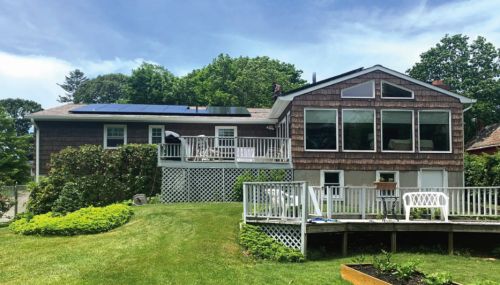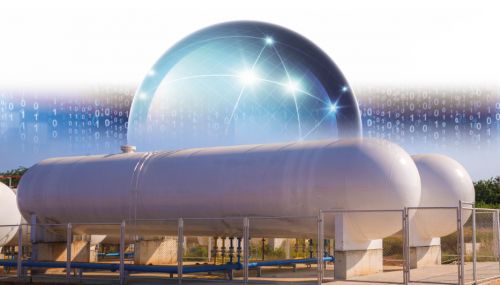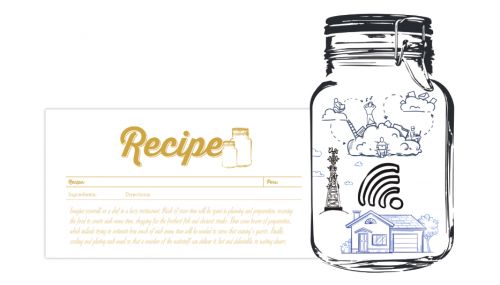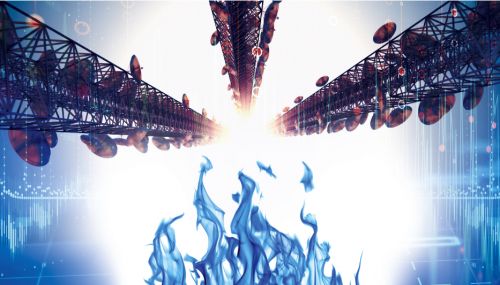All
Training Today’s Technicians for Tomorrow’s Technology

John Levey wrote the book on Oilheat training … literally. In addition to authoring NORA’s “Heating Oil Storage Tanks – Guide for Quality Installation and Maintenance,” Levey has over the years contributed his insight and expertise to countless training materials for Oilheat technicians, delivery personnel and customer service staff.
Not just the leading member of NORA’s Education Committee, he also serves as President of Oilheat Associates, Inc. and is on the National Fire Protection Association Committee on Liquid Burning Equipment and the UL Standard Technical Panel for Above Ground Oil Tanks.
Most recently, Levey has brought a number of new training programs to the NORA Research and Education Center in Plainview, NY, and has helped revamp NORA’s training curriculum through updates to the alliance’s education and training website, Learning.NORAWeb.org.
Oil & Energy reached out to Levey to discuss the current state of technical training in the Oilheat industry, as well as what NORA and its stakeholders can do to help prepare today’s technicians for tomorrow’s technology.
O&E: How has the Oilheat industry’s technical training evolved over the past few years?
JL: While there will always be a demand for live training sessions, we’ve seen an increase in the amount of training being offered on the internet. Internet based training enables technicians to increase their knowledge at their own pace based on their individual needs and schedules.
We at NORA are working to develop Learning.NORAWeb.org into a one-stop website for checking certification status, learning with videos and online training programs, and even testing for the certification exams.
O&E: What can you tell our readers about NORA’s new online training videos?
JL: NORA has produced 17 videos that cover various topics including tune-ups, primary controls, tank installations and carbon monoxide.
While these videos have proven to be a valuable training resource, they can become dated soon after they’re released due to changes in technology. Many manufacturers now produce their own educational videos that demonstrate the installation and maintenance of the components of today’s Oilheat systems.
NORA is working with manufacturers to make appropriate classes available through Learning.NORAWeb.org and
is granting CEU’s for those classes. In addition, we’re developing an online version of the Advanced Hydronics class that is included in the new Gold Certification program.
O&E: What kind of response have you seen and heard from participants?
JL: The response has been very positive.
A service manager who’s an active member of OESP sent an email shortly after we released the first five manufacturer-produced videos, saying, “The new videos are great! I am using them to teach our service techs as a group.”
NORA’s original intention was for our videos to become “seminars in a box” that can be used during service department meetings. These new videos allow us to expand on that concept and enable service managers to offer brief, effective internal training sessions on a regular basis. It also makes it easier for technicians to stay up to date on training, without the expenses sometimes associated (tuition, travel, lodging, etc.).
O&E: As Oilheat equipment technology advances, how can technical training keep pace?
JL: We need to continually search for effective new ways to deliver training. The new online classes are a first step in that direction.
Many years ago, I attended a class on a new and innovative piece of equipment during which the instructor held up a control and asked the group, “What is this?”
A wise guy in the class commented, “It’s a piece of junk!”
The instructor came right back at him, saying, “You’re absolutely right!” He then continued by explaining, “Anything we don’t understand is a piece of junk. Our job is to understand how the new stuff works, because it’s more efficient, it’s here to stay and your continued employment depends on it.”
Unfortunately, there are still people working in our industry who refer to new technology as “junk.” I believe a significant part of their reasoning is that they simply don’t understand it. Think about a first-generation cad cell primary control. The most popular versions have three wires and operate as intermittent ignition only. Some people prefer these controls because they understand them – BUT – today’s state-of-the-art primary controls offer so many advantages that they essentially render the first-generation controls as obsolete as “stack relays.”
If you look at the first batch of manufacturer-produced videos that NORA released, you’ll notice that two of them cover new primary controls (and we have more to come). As technology continues to advance, our industry needs to promptly deliver effective training to ensure that our technicians understand it well enough to accept it with open arms.
O&E: What can Oilheat dealers do to ensure their technicians stay up to date?
JL: Help them achieve and maintain NORA certification!
Technicians must earn a minimum of 24 CEU’s every five years to keep their certifications, and their employers should make it easy for them to earn those continuing education credits.
A trainer, much wiser than I, was faced with an employer who didn’t believe in paying for training or conducting it on company time. He commented, “Why should I help them become better technicians? If I train them, they’ll go to a competitor who’ll pay them more than I do.”
The trainer asked, “So, you’d rather not train them and have them stay?”
Trained service technicians who stay abreast of changes in technology provide better service, which leads to more satisfied customers and increased profitability. It’s in their employers’ best interests to ensure that they continue to receive effective training throughout their careers.
O&E: As fuel dealers strive to “own the home” in terms of whole-home comfort service, do you see state Oilheat associations working with A/C or propane equipment specialists?
JL: Many Oilheat dealers sell alternative fuels and provide service for a broad range of appliances, and some associations currently have members who don’t sell fuel oil.
Going forward, I can see more dealers offering a variety of home comfort services, and industry associations opening up to a variety of other service providers.
O&E: How do apps like Fuel Savings Calculator 2.0 empower today’s technicians?
JL: The FSA helps technicians understand overall efficiency, so they can explain it to their customers. Twenty years ago, a homeowner whose heating equipment had a 78% combustion efficiency rating would routinely be told that it didn’t pay to upgrade, because they’d only realize a small improvement.
The FSA can now clearly demonstrate that combustion efficiency is just one factor to be considered and that some of those homeowners can save in excess of 20% by upgrading.
O&E: What are some other apps and devices being leveraged in the field today?
JL: At the moment, the main thing that comes to mind is diagnostic controls. Today’s primary controls provide valuable information to help technicians quickly diagnose situations.
O&E: As new technicians enter the field, is there a risk of them becoming overly dependent on digital apps and testing devices? If so, how can trainers mitigate this?
JL: I think you’re asking, “If it gets to the point where it’s all in an app, what happens if the tech’s device stops working?”
We can’t produce technicians who only know to “Change component X if the red light flashes three times.” If we get to that point, we won’t have technicians — we’ll have robots. Trainers need to continue enabling technicians to understand how heating systems and their components work; how to troubleshoot with gauges and meters; and most importantly, how to think through the challenges they face on a daily basis.
Related Posts
 NORA Net-0 Home Update
NORA Net-0 Home Update
Posted on October 6, 2023
 Building Your Information Network with Propane Tank Monitors
Building Your Information Network with Propane Tank Monitors
Posted on August 11, 2023
 A Recipe for Delivery Efficiency
A Recipe for Delivery Efficiency
Posted on August 11, 2023
 Don’t Ignore the Storage Capacity You Already Own
Don’t Ignore the Storage Capacity You Already Own
Posted on July 18, 2023
Enter your email to receive important news and article updates.
